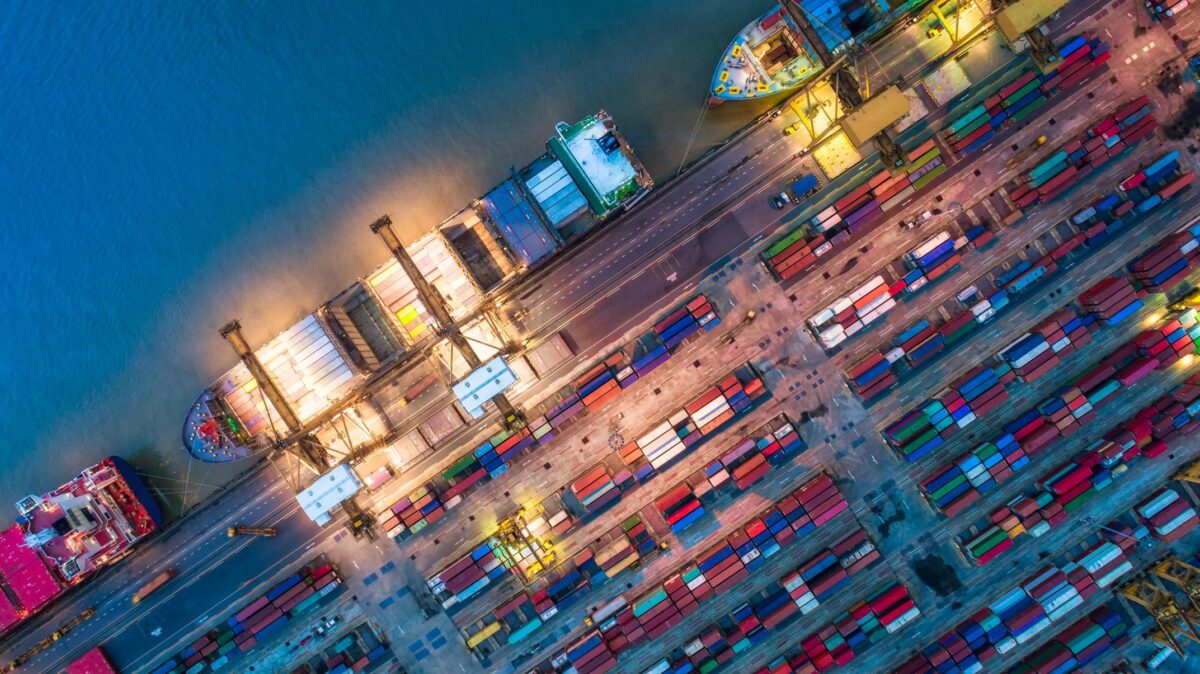Toppe Consulting – Your Source for Digital News & Trends in the Legal Industry
Kearney’s 2025 Reshoring Index plummeted by 311 basis points, falling back into negative territory after two positive years, as the manufacturing import ratio increased 9% with imports from 14 Asian low-cost countries growing faster than U.S. domestic manufacturing output. The reversal represents more than disappointing statistics—it exposes the brutal reality that political rhetoric and CEO intentions cannot overcome fundamental supply and demand economics when domestic manufacturing capacity fails to materialize fast enough to meet market needs.
Despite continued capital investment, U.S. manufacturing output expanded by just 1% in the past year—half the rate of U.S. manufactured goods consumption increase—reflecting longer-than-expected lags between investment announcements and operational capacity coming online. Manufacturers announced billions in new domestic facilities with great fanfare. Yet factory floors remain under-equipped, production lines stay offline, and promised capacity exists only in PowerPoint presentations while actual demand gets filled by the same Asian suppliers companies pledged to replace.
Imports from Asian low-cost countries including China increased by 10% or $90 billion, led by categories such as computers, electronics, and electrical equipment. The sectors positioned as reshoring priorities—advanced electronics, precision manufacturing, and technology hardware—reverted fastest to overseas sourcing when domestic alternatives couldn’t deliver.
The Mexico Mirage: Nearshoring’s Broken Promise
U.S. imports growth from Mexico trailed the boom of the previous two years while Canada recorded year-over-year contraction in exports to the U.S., as U.S. demand outpaced what domestic production could supply and Mexico was not able to fill the gap, forcing manufacturers to revert to sourcing from distant Asian countries they had previously relied upon. The nearshoring strategy that dominated supply chain conferences and boardroom presentations hit infrastructure constraints, energy limitations, and bureaucratic obstacles that prevented Mexico from absorbing production shifts at the scale and speed required.
Energy grid constraints plague Mexican industrial zones where power interruptions disrupt precision manufacturing requiring stable electrical supply. Research on electric vehicle battery supply chains shows how complex international dependencies on copper-producing nations represent significant departures from historical automotive sourcing patterns. Skilled labor shortages emerge as multiple manufacturers simultaneously attempt staffing new operations in regions lacking sufficient technical workforce depth. These structural limitations won’t resolve quickly regardless of political motivation driving nearshoring strategies. For context on related challenges, examining Manufacturing’s Automation Paradox: Why Robot Investments Are Creating More Problems Than They Solve reveals how technology constraints compound supply chain difficulties.
The Labor Cost Trap Manufacturers Can’t Escape
CEOs identified labor cost as the top challenge to reshoring and nearshoring for the third consecutive year, with nearly 25% ranking it as their primary barrier, as wages in Asian low-cost countries remain dramatically lower than in the United States. The wage differential isn’t narrowing enough or fast enough to make domestic manufacturing economically competitive for most products. Rising U.S. manufacturing wages—driven by acute labor shortages—widen rather than close the cost gap even as Chinese wages increase modestly.
Labor shortages compound cost pressures as manufacturers competing for scarce workers bid up compensation while struggling to find qualified candidates at any price. Skills gaps mean available workers lack capabilities for advanced manufacturing, forcing extended training investments that further increase labor costs per unit produced. Deloitte projects the U.S. manufacturing sector needs 3.8 million new employees by 2033, with more than half potentially going unfilled without significant intervention.
Retirements accelerate workforce depletion as experienced workers exit without adequate replacement pipelines, taking institutional knowledge and specialized skills that take years to rebuild. The timing couldn’t be worse as reshoring initiatives demand precisely these capabilities to establish domestic production at competitive quality and efficiency levels.
The Investment-to-Capacity Gap
Factory construction timelines stretch far longer than executives anticipated when announcing reshoring commitments. Environmental reviews, permitting processes, construction delays, and equipment installation challenges push facility commissioning dates repeatedly. The share of CEOs planning to reshore part of their operations in the next three years increased 15% compared to last year, indicating continued long-term interest despite current setbacks, with about 50% more CEOs citing geopolitical tensions as a primary reshoring motivator.
But intention doesn’t equal execution. Companies publicly commit to domestic manufacturing while procurement teams quietly maintain Asian supplier relationships as backup plans that become primary plans when domestic alternatives fail delivering. The gap between CEO pledges and purchasing reality exposes how reshoring becomes performative rather than practical when underlying economics don’t support the transition. Understanding related challenges through Why More Manufacturers Are Turning to Contract Manufacturing Instead of Building Capacity provides additional perspective on how companies actually solve capacity constraints.
Toppe Consulting: Strategic Manufacturing Transformation
At Toppe Consulting, we help manufacturers navigate complex supply chain decisions with realistic assessments of reshoring economics, capacity requirements, and implementation timelines that align strategy with operational reality.
Our Services Include:
- Digital Transformation Consulting – Strategic technology implementation for manufacturing operations
Ready for Realistic Supply Chain Strategy? Contact Toppe Consulting to develop sourcing approaches based on actual capabilities rather than wishful thinking.
About the Author
Jim Toppe is the founder of Toppe Consulting, a digital marketing agency specializing in law firms. He holds a Master of Science in Management from Clemson University and teaches Business Law and Marketing at Greenville Technical College. Jim also serves as publisher and editor for South Carolina Manufacturing, a digital magazine. His unique background combines legal knowledge with digital marketing expertise to help attorneys grow their practices through compliant, results-driven strategies.
Works Cited
“Kearney’s 2025 Reshoring Index Declines by a Massive 311 Points, Providing a Reality Check on US Manufacturing Readiness.” PR Newswire, Kearney, 30 Apr. 2025, www.prnewswire.com/news-releases/kearneys-2025-reshoring-index-declines-by-a-massive-311-points-providing-a-reality-check-on-us-manufacturing-readiness-302441064.html. Accessed 11 Nov. 2025.
“U.S. International Trade Commission: The Supply Chain for Electric Vehicle Batteries.” Journal of International Commerce and Economics, U.S. International Trade Commission, 2018, www.usitc.gov/publications/332/journals/the_supply_chain_for_electric_vehicle_batteries.pdf. Accessed 11 Nov. 2025.




